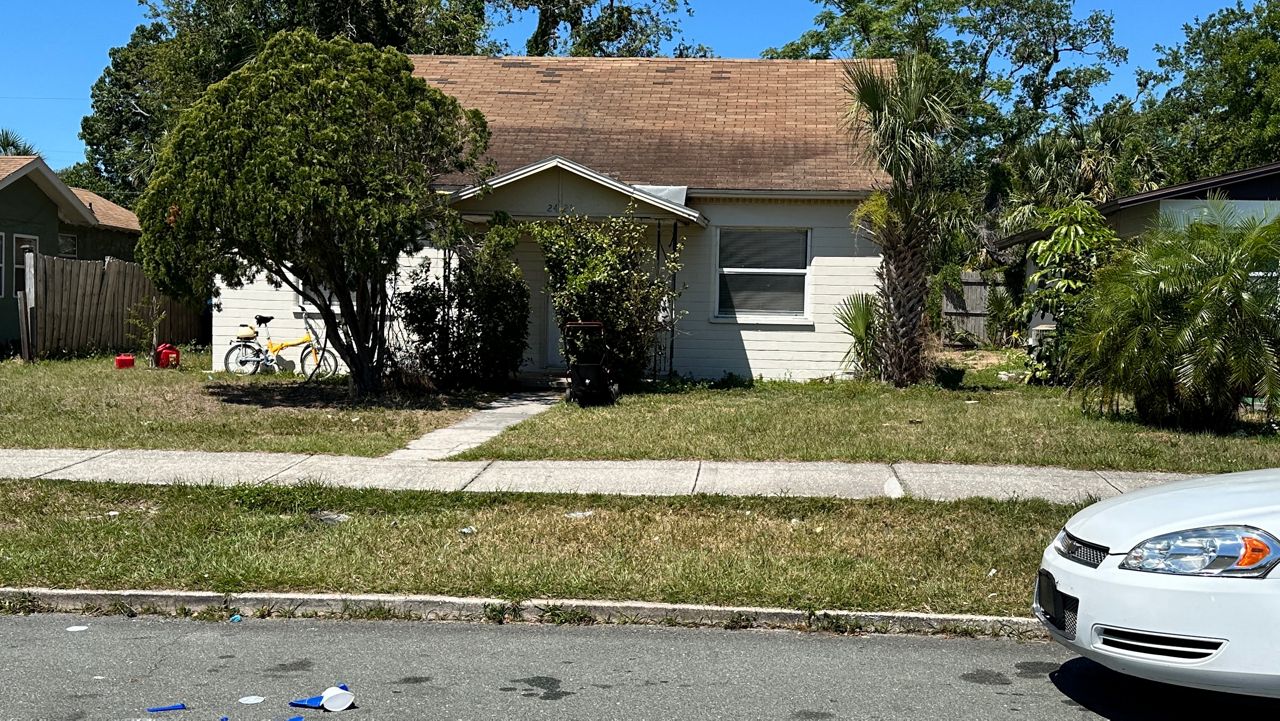TAMPA, Fla. — For many here in Florida, 2024 will be a year to remember. No matter where you looked, it always seemed like Florida was in the news. It didn’t matter if you read the sports section, politics section or the weather section, Florida was definitely in the spotlight. As the year comes to a close, we look back at the top 10 stories in Florida and the Tampa Bay area.
10. Small plane crash that killed 3 at Clearwater mobile home park
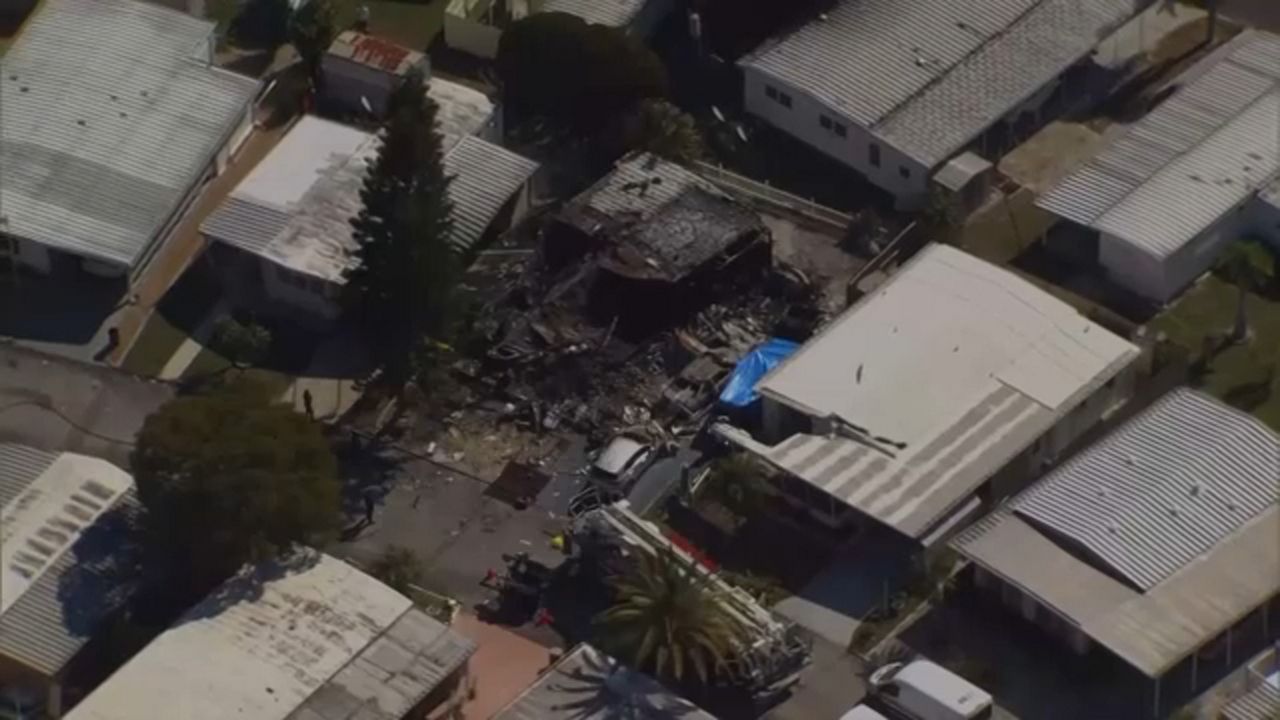
Three people were killed on a February evening when a small plane crashed into a mobile home park in Clearwater.
The plane crashed at Bayshore Waters Mobile Home Park, causing multiple homes to catch on fire, officials said.
According to the Federal Aviation Administration, one person in the plane was killed and two people on the ground died in the crash.
Officials said the plane took off from Vero Beach, and witnesses at the mobile home park reported hearing sputtering sounds from the plane before the crash.
Crews contained the fire in less than 20 minutes, but not before a number of homes were destroyed. The victims were Martha Parry, 86; Mary Ellen Pender, 54; and Jemin Patel, 54.
9. Study: $94K salary needed to live comfortably in Tampa Bay

According to a study by Smart Asset, single adults living in Tampa, St. Petersburg and Orlando must have an average salary range of $94,000 to $100,000 to live comfortably. According to Corporation to Develop Communities of Tampa CEO Ernest Coney, in Hillsborough County, the average area median income for a single person is $48,000, and for a family of four, it's $69,000 — that's half of the number that people need to survive.
The Corporation to Develop Communities of Tampa has partnered with Fifth Third Bank and others to offer affordable housing and small business loans, but Coney said that with increased inflation and cost of living, access to such funding is limited. Despite this, Coney said his group is committed to helping residents find affordable housing that meets their needs.
8. USF community mourns basketball coach Amir Abdur-Rahim
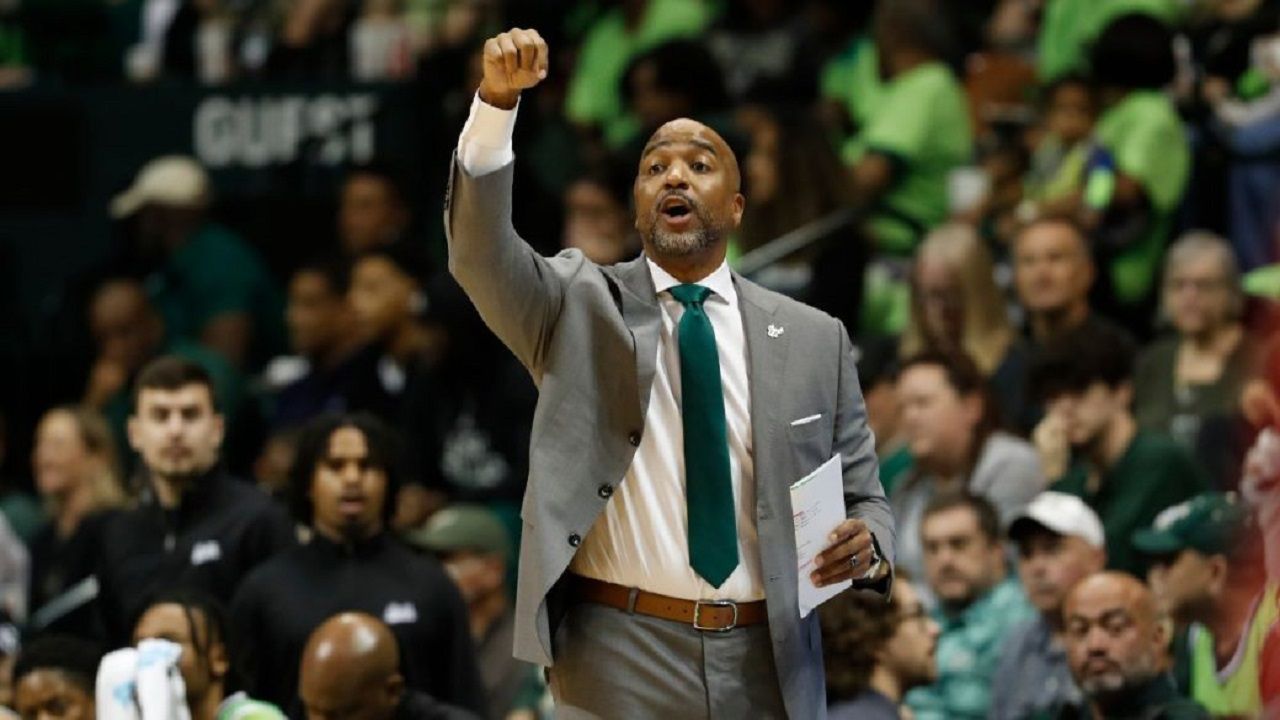
The University of South Florida community and all of college basketball were saddened in late October when men's basketball coach Amir Abdur-Rahim died while undergoing a medical procedure.
In his lone season at USF, the Bulls won 25 games and briefly climbed into the national rankings. He was the American Athletic Conference Coach of the Year.
Hundreds of people filled the Yuengling Center days later for a celebration of life, where several speakers honored the coach and his impact on family, players, fellow coaches and the entire Bulls community.
7. Justice For all: Human Trafficking / Black Maternal Health / Black History
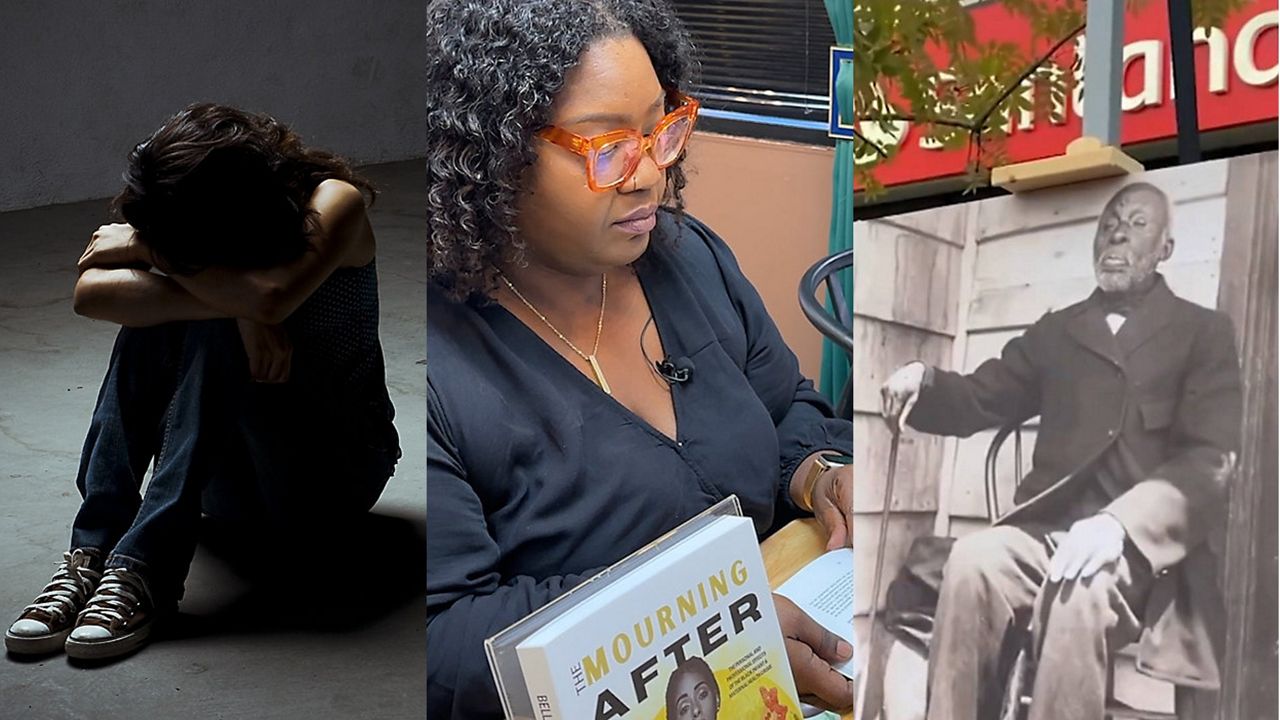
Our "Justice For All" segments target key issues around the Tampa Bay area in an attempt to find solutions. This year's discussions spanned across a variety of topics, from developing ways to prevent human trafficking, raising awareness and highlighting racial disparities in Black maternal health, and the efforts in reclaiming abandoned African American gravesites. Members of our community share their stories on how they have been impacted by these subjects. While the work continues to get resolutions, these stories help to educate others in the hopes of it never happening again in the future.
Human Trafficking Crisis: Out of the Shadows
Human trafficking continues to be a complicated problem in the United States and around the world. A study by the Global Slavery Index estimates that there are about one million people living in "conditions of modern slavery" today. Florida alone has the third-highest number of calls into the National Trafficking Hotline. Law enforcement agencies and school officials have ramped up efforts in identifying trafficking attempts with a combination of education and technology. There are also ways the average person can help and take action.
Black Maternal Health: Advocacy, awareness and answers:
According to the Centers for Disease Control and Prevention (CDC), each year in the U.S. hundreds of people die during pregnancy or in the year after. Black women are three times more likely to die from a pregnancy-related cause. Florida has some of the highest numbers of babies and mothers dying in the country — ranked in the top ten. As those numbers sadly continue to climb, mothers around the Tampa Bay area use their personal stories to raise awareness and help improve Black maternal health outcomes.
Grave Betrayal: The Black history that lies beneath us:
Millions of African Americans across the United States were buried in graves that were either neglected, forgotten, or both. Land belonging to historic Black cemeteries was often sold to developers, who paved over the plots. Thousands were buried in mass graves, the identities of the dead a mystery to this day. Organizations and local governments across the country, supported by the dedication of volunteers, are working to identify the dead, relocate their remains, and bring peace to their families.
6. Dog tied to pole before Hurricane Milton hit the Bay area
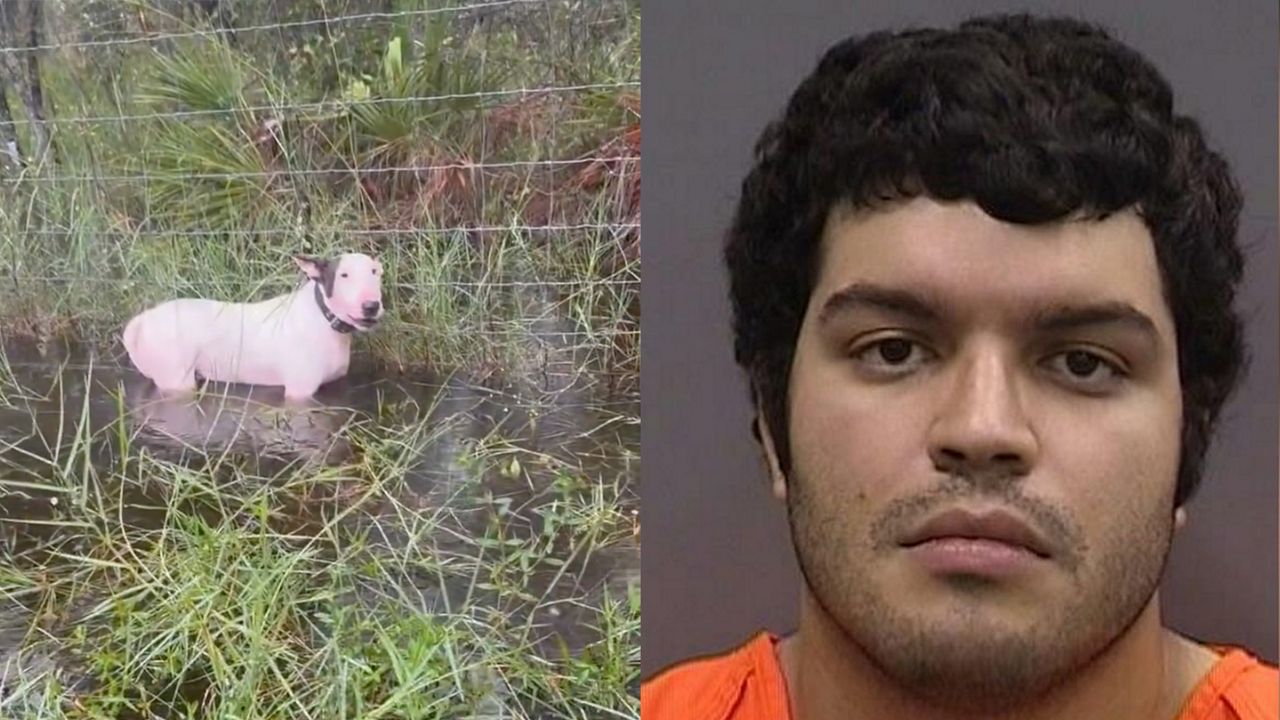
As the Tampa Bay area was gearing up for Hurricane Milton, news broke about a Florida Highway Patrol Trooper responding to a report of a dog tied to a pole on I-75 near Bruce B. Downs Boulevard.
You can imagine how the area responded. People all over social media were calling for the dog's owner to be found and brought to justice. This even reached the ear of the governor who praised the eventual arrest of Giovanny Aldama Garcia (owner).
The dog was eventually given the name “Trooper” and was in the care of the Leon County Humane Society. Many people reached out about adopting Trooper, but at last check-in, he was being given time to decompress in foster care so he can eventually be placed with a family.
5. Milton’s winds topple crane into St. Pete building
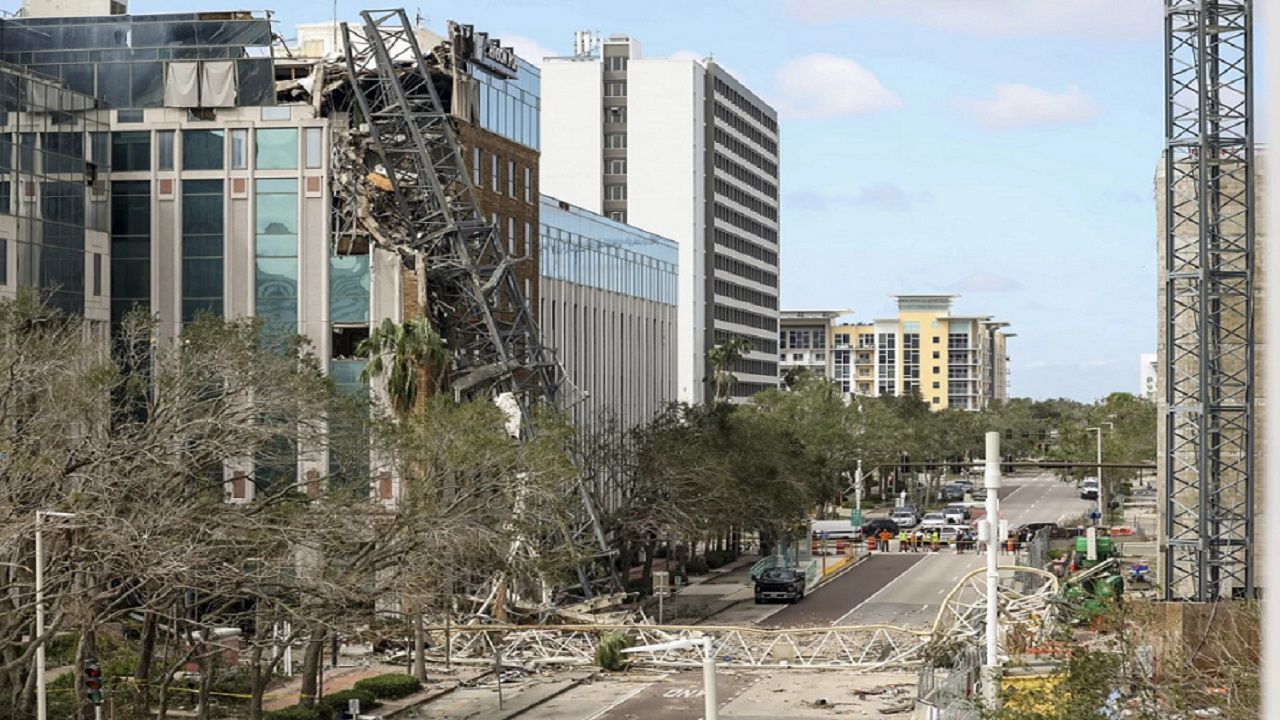
When Hurricane Milton’s winds ripped across the area in October, some gusts were as strong as 100 mph.
It was these gusts that snapped a crane downtown at the Residences at 400 Central and sent it tumbling into a nearby building.
There were no injuries.
The state is not investigating the incident, and state law prohibits city leaders from passing regulations on cranes.
Still, Councilwoman Gina Driscoll said she’s looking for other options to protect residents and local businesses in the future.
4. Stamkos departs the Bolts

After 16 seasons of wearing a Tampa Bay sweater, Steven Stamkos left the Lightning in July via free agency.
Stamkos, the Lightning captain who helped the Bolts win back-to-back Stanley Cups, signed a four-year deal with Nashville for an average annual value of $8 million.
Tampa Bay drafted Stamkos with the first overall pick in the 2008 NHL draft.
The move turned out to be one of Tampa Bay’s best ever as Stamkos exited as the franchise leader in goals (555), points (1,137) and games played (1,082).
3. Marijuana and abortion amendments fail to pass
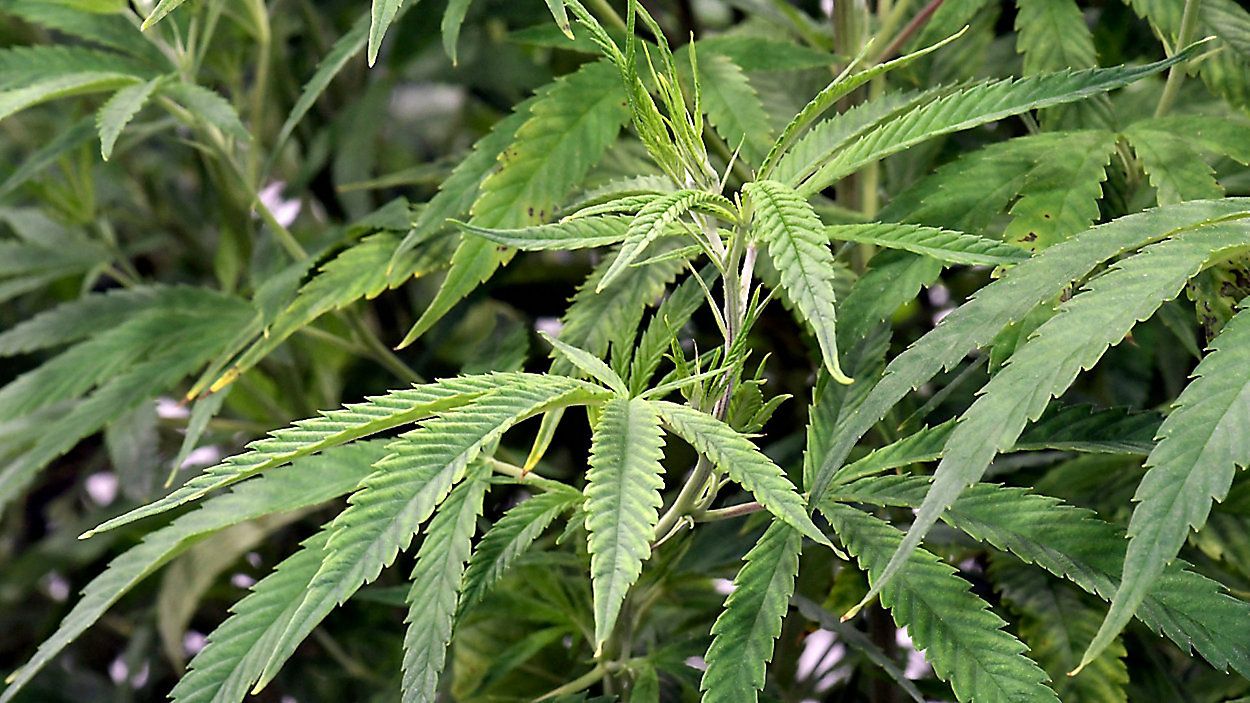
Florida's Amendment 3 on marijuana and Amendment 4 on abortion did not receive enough support to pass during the 2024 election. Those constitutional amendments required a 60% vote in order to pass, and both came up short.
While medical marijuana is already legal in Florida, Amendment 3 would have legalized recreational marijuana as well had it been approved. People ages 21 and older would have been legally allowed to possess three ounces of marijuana at a time.
And while Florida currently outlaws abortion after six weeks of a pregnancy, Amendment 4 would have protected access to abortion up to “viability” had it been passed, which most doctors suggest would be the 23-24 week mark. This would have aligned the state's abortion policy with federal protections that used to exist under Roe v. Wade.
2. Tropicana Field damage / Rays stadium deal battle

Tropicana Field was one of many structures severely damaged by Hurricane Milton, as part of its translucent fiberglass roof was ripped off when the storm made its way through the Tampa Bay area on Oct. 9. Nicknamed “The Trop,” the St. Petersburg stadium has been home to the Tampa Bay Rays since 1998.
Many linemen, National Guard and other first responders were going to be stationed at the Trop to help with storm recovery. Beds, cots and other supplies had been scattered over the playing surface in its wake.
To make matters more complicated, the city previously had plans to build a new $1.3 billion ballpark set to open in 2028. However, the Rays in November sent a letter ahead of an anticipated vote on financing saying that the deal was “jeopardized,” claiming that the county not finalizing the bonds made getting the stadium done by 2028 impossible, and getting it done in 2029 would create more costs than the team claims they can handle.
On Dec. 5, St. Petersburg city leaders OK'd bonds for the new stadium and Gas Plant development.
On Dec. 17, Pinellas County commissioners approved bonds to finance the new stadium. The 5-2 vote unlocked $312 million in funding the county has pledged for the new ballpark. It was the third time the Rays bond vote has gone before the commission since October. Ahead of the bond vote, the Rays responded to Pinellas County’s request for information to show they’ve been fulfilling their stadium obligations. The Rays sent a letter stating they have done 50% of the design and spent $11.6 million.
The Rays have to meet several conditions on funding and designs by March 31, or else they won’t be able to access the bonds.
1. Hurricanes Helene and Milton
It's no surprise that Hurricane Helene and Hurricane Milton would be at the top of the list for 2024. Both storms had huge impacts on the Tampa Bay area.
Helene would form in the northwestern Caribbean Sea on Tuesday, Sept. 24 and become the eighth named storm of the 2024 Atlantic hurricane season. It was the fifth hurricane, the second major one (Category 3+) of the season.
Helene developed from a tropical disturbance in the Caribbean Sea, becoming a tropical storm as it approached the Yucatan Peninsula. Because of the warm waters of the Gulf of Mexico and its slow progression to the north, Helene became a hurricane early on Wednesday, Sept. 25.
As it approached the southeastern Gulf of Mexico and the loop current, Helene rapidly intensified into a Category 4 hurricane on Thursday, Sept. 26.
On Thursday evening, Helene reached peak intensity with winds of 140 mph before it made landfall near Perry, Fla., along the Big Bend region, maintaining winds of 140 mph and peak intensity. This was the strongest storm to have ever made landfall along the Big Bend coast of Florida.
As Helene moved inland, it quickly weakened to a tropical storm and eventually became a post-tropical cyclone on Friday over Tennessee before stalling out and finally dissipating on Sunday.
An upper-level disturbance merged with the weakening Helene as it traversed Georgia and South Carolina. This helped enhance the high moisture of Helene, bringing catastrophic rainfall and flooding to areas in the southeast, thanks to orographic lift.
Atlanta had its first ever Flash Flood Emergency on Friday morning when 11.12 inches of rain fell over 48 hours, the most the city has seen over two days since record keeping began in 1878.
Other areas inundated with water include the mountains in western North Carolina and South Carolina. This happened because the air from Helene was forced up the Blue Ridge and Appalachian Mountains, causing it to cool and condense into clouds, making it rain out along the higher terrain. Rainfall totals were measured by the feet, with 30.78 inches of falling in Busick, N.C.
Communities have been devastated by Helene's flooding and some will take years to rebuild.
- Helene was the strongest storm to hit Florida’s Big Bend, brought historic flooding to Southeast
- PHOTOS: Helene before & after satellite photos
- National Weather Service report on Helene
- PHOTOS: Helene's impacts seen across Florida
Hurricane Milton's devastating impacts on the Bay area
Following Helene, Hurricane Milton would start to take form in the Bay of Campeche on Saturday, Oct. 5, and quickly intensify into a hurricane on Sunday, Oct. 6, becoming the ninth hurricane of the season.
By the morning of Oct. 7, Milton was a Category 3 hurricane, making it the fourth major hurricane of the season. By the late afternoon of that same day, Milton underwent rapid intensification and became a Category 5 hurricane with maximum winds of 180 mph as it moved across the Gulf of Mexico. It solidified itself in the record books before making landfall.
It fluctuated in strength over the next two days from a high-end Category 4 storm to a low-end Category 5 hurricane. As it approached the western coast of the Florida peninsula, it interacted with a front and weakened to a Category 3 hurricane.
Prior to landfall on Oct. 7, the outer rainbands spawned tornadoes in central and southern Florida. A total of 126 tornado warnings were issued in Florida, the second most tornado warnings ever issued in one day, and the most ever in Florida or from a tropical system.
Milton made landfall as a Category 3 hurricane with winds of 120 mph on the evening of Oct. 9 near Siesta Key, Florida. It weakened to a Category 2 hurricane shortly after landfall and eventually became a Category 1 storm. It maintained hurricane status as it crossed the Florida peninsula.
Unlike traditional landfalling hurricanes, dry air entrained the storm on the southern side. As Milton moved inland, heavy rain created a flash flood emergency north of the center of circulation, including the cities of St. Petersburg, Tampa and Clearwater. St. Petersburg — Albert Whitted Airport reported 18.54" from Milton.
It was the fifth Gulf Coast landfalling hurricane this year, joining Beryl, Debby, Francine and Helene. It tied 2005 and 2020 for the second most Gulf hurricane landfalls on record, trailing only 1886, where six Gulf hurricanes made landfall.
- Milton was a major hurricane that caused destruction across Florida's peninsula
- Hurricane Milton report highlights storm's impacts on Bay area
- PHOTOS: Rays release post-Milton photos of inside Tropicana Field
- Rays to play at Tampa's Steinbrenner Field in 2025
- See what the Tampa Bay coast looks like after 1 month after Hurricane Milton
Honorable Mentions
- Tampa City Council authorizes $14M lawsuit settlement after Robert DuBoise was falsely convicted of a 1983 rape and murder of a Tampa woman. He spent 37 years in prison.
- The new Gateway Expressway opened in Pinellas County. For the first time, drivers have new connections between U.S. 19, the Bayside Bridge and Interstate 275.
- Family of injured Citrus County deputy worries about future, rift with sheriff
- Iconic Fantasy of Flight Douglas DC-3 removed from alongside I-4
- Leto High School track coach and assistant principal save student's life
- Rays unveil new 'Grit and Glow' City Connect uniforms
- Thousand-pound military ordnance found in Brooksville
- Disney announces changes to its Disability Access Service at theme parks




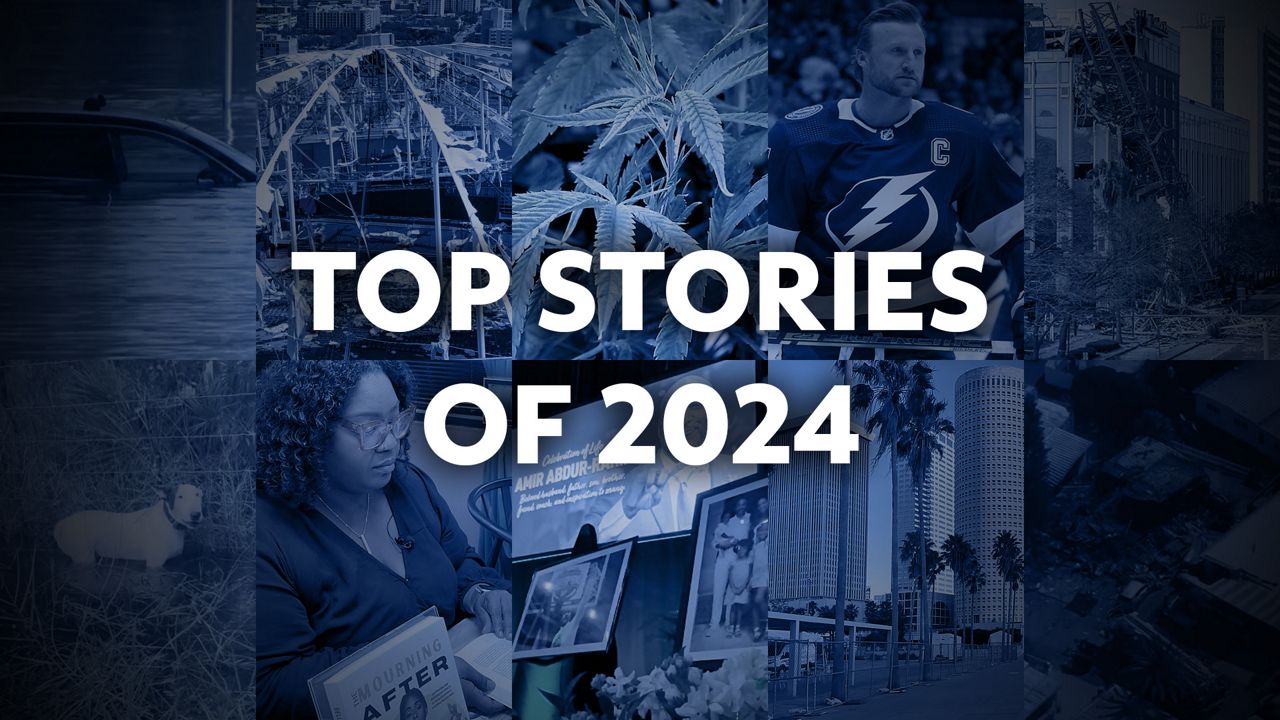


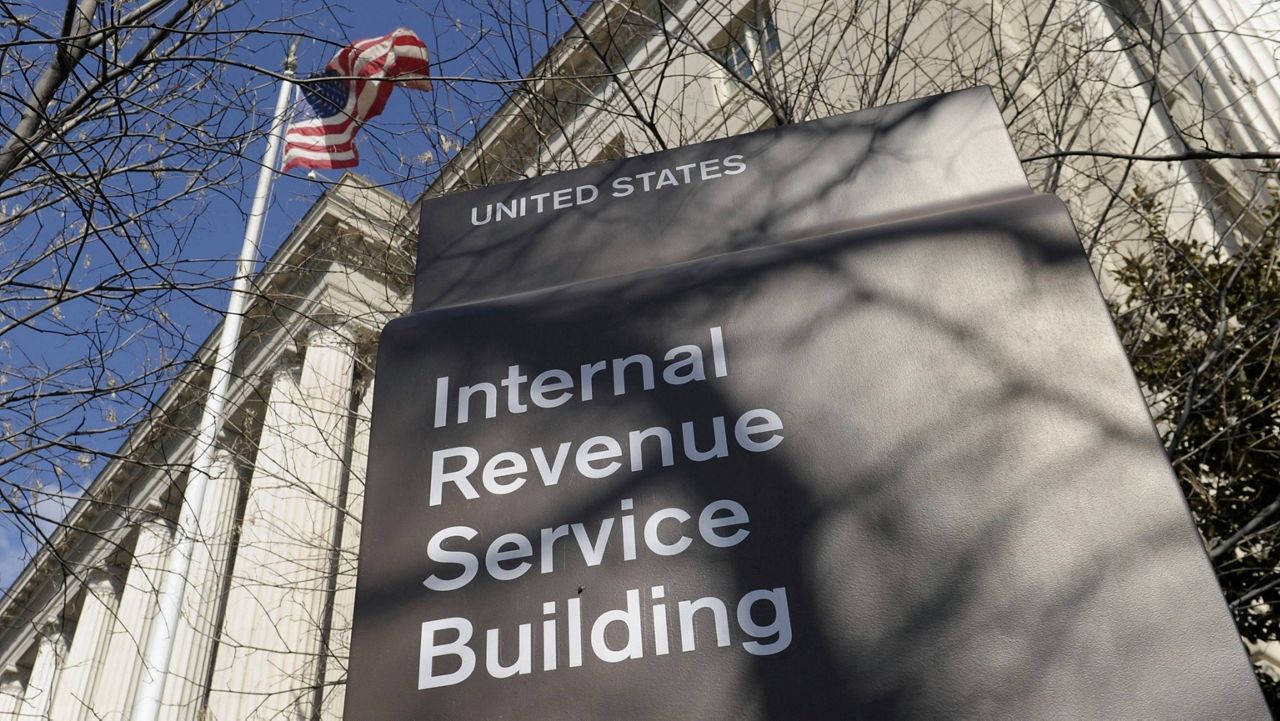
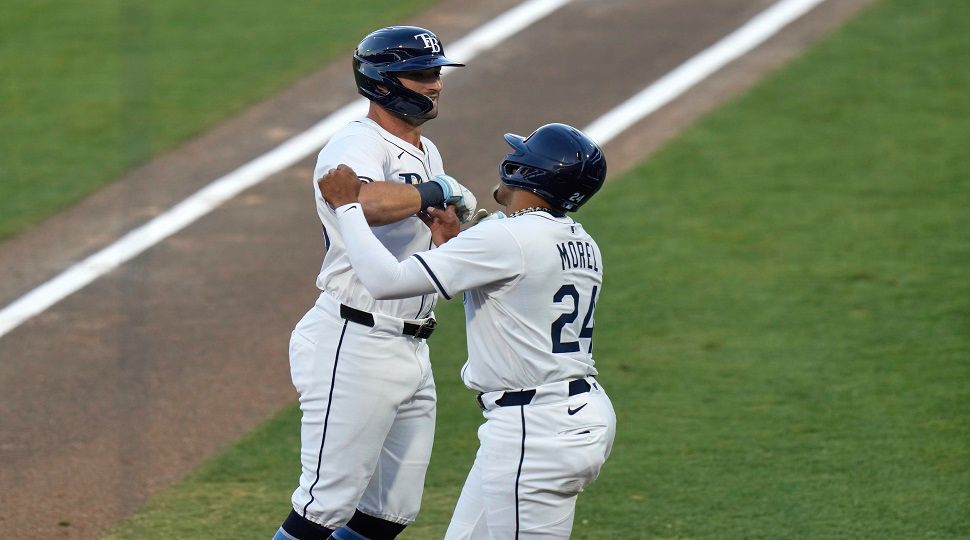
_crop)
